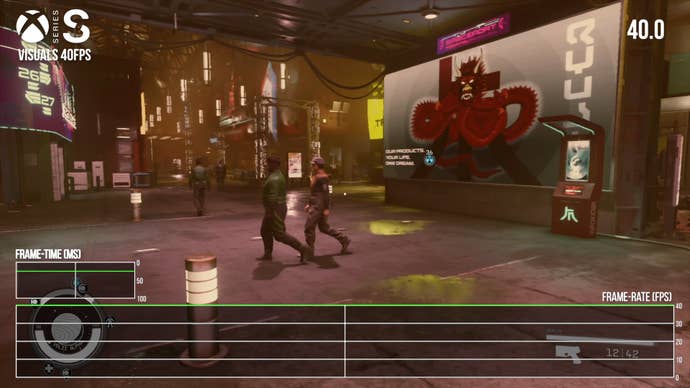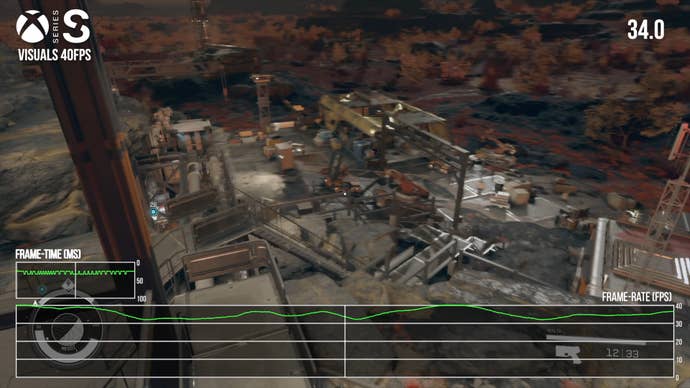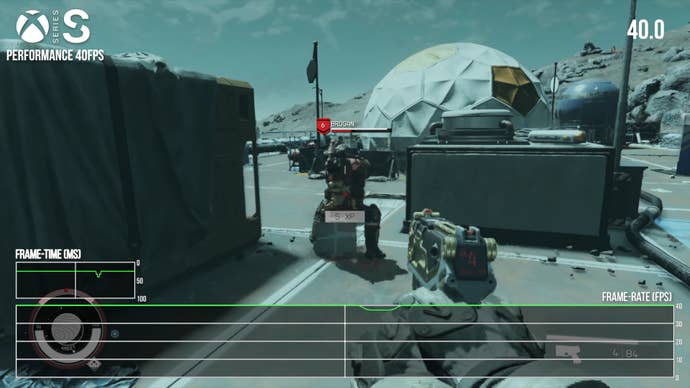The junior Xbox’s limits are felt more keenly.
So how close do these updated modes come to their Series X counterparts?
Is this patch a win for Series S users, or do these new options prove visually unsatisfying?

There’s also the option to enable or disable v-sync.
The performance and visuals modes have some obvious visual differences.
Shadow resolution takes a big hit in the performance mode, which is very obvious across the game.

Shadow draw-in is also more aggressive for some distant objects.
The other major cutback comes to foliage draw.
Ground foliage draws in at closer range in the performance mode, and has much less density.
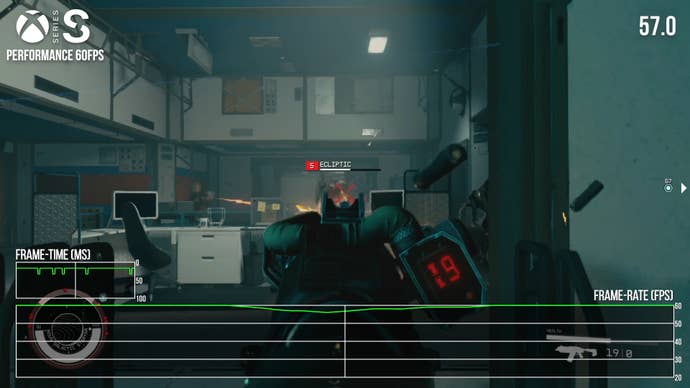
The visuals mode is then reconstructed to something like 1440p, while the performance mode appears closer to 1080p.
Curiously, this may have an impact on how the game behaves when you change modes.
On Series S, there would be no need to do that.
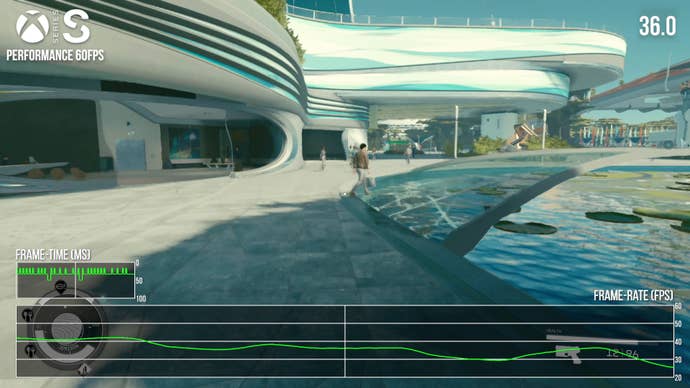
Let’s start with the 60Hz modes first.
Series S has a performance mode, which defaults to a 60fps frame-rate cap.
Take things outdoors or throw in a bit of combat, and it’s liable to start dropping frames.
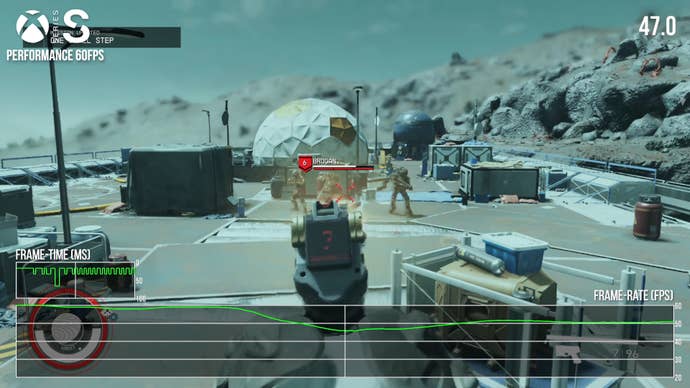
New Atlantis and Akila provoke the typical issues, with generally low frame-rates, and occasional more severe stutters.
When the S is just short of 60fps, the Series X is just about there.
There’s the same pattern in the visuals mode with a 60fps frame-rate cap.
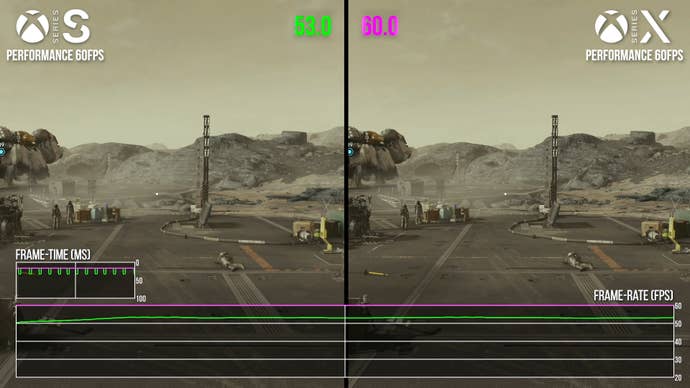
It doesn’t have much impact when targeting 30fps, however.
Here, both the visuals and performance modes are capable of a very stable frame-rate.
Performance logs a more credible 40fps update, only really suffering extended dips in the aforementioned city spaces.
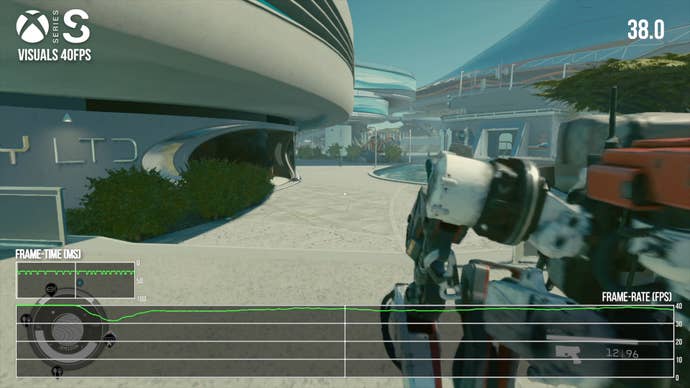
I think there are a lot of potential configurations to play with that could work well with VRR.
Bethesda’s attempt to patch in these graphics modes to achieve that goal has been mostly successful.
